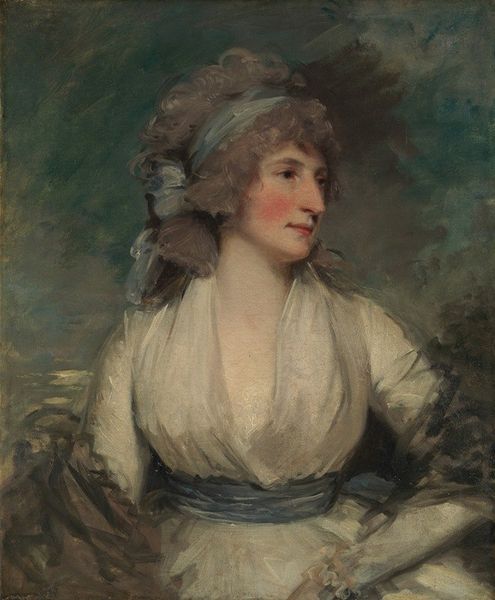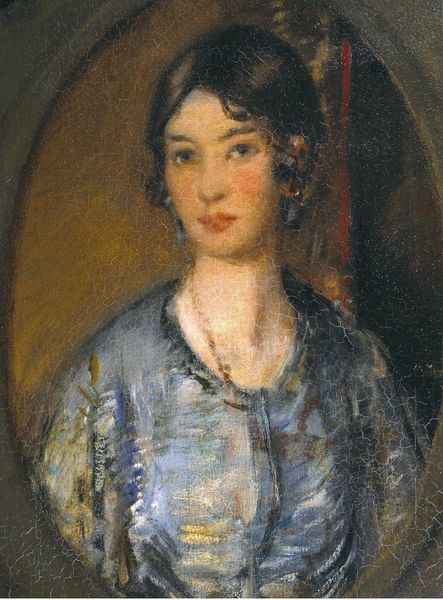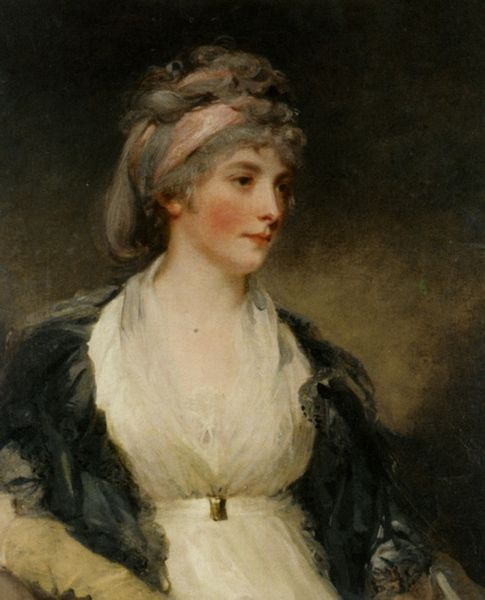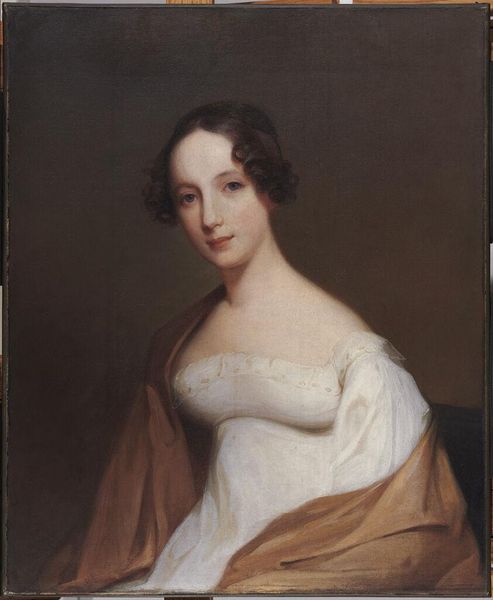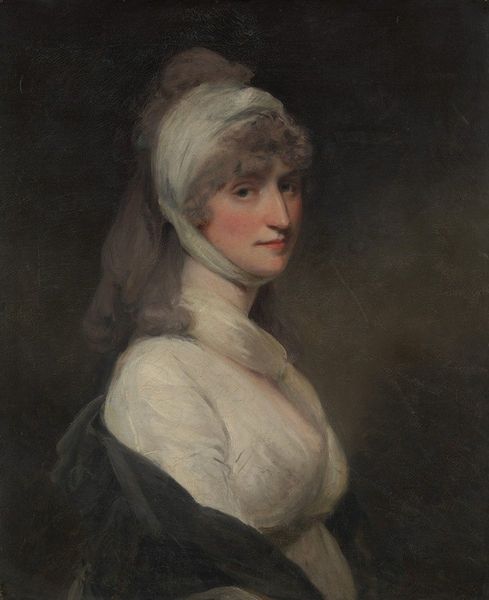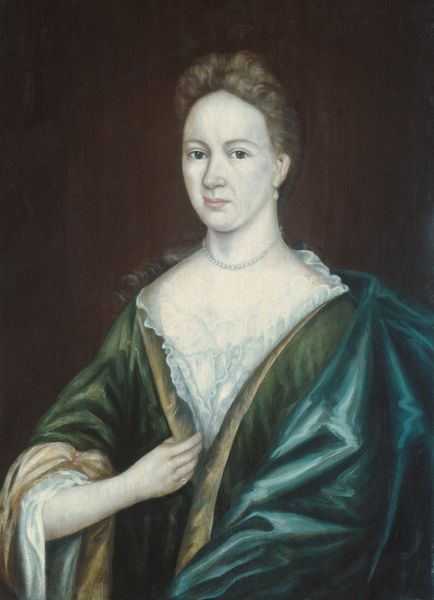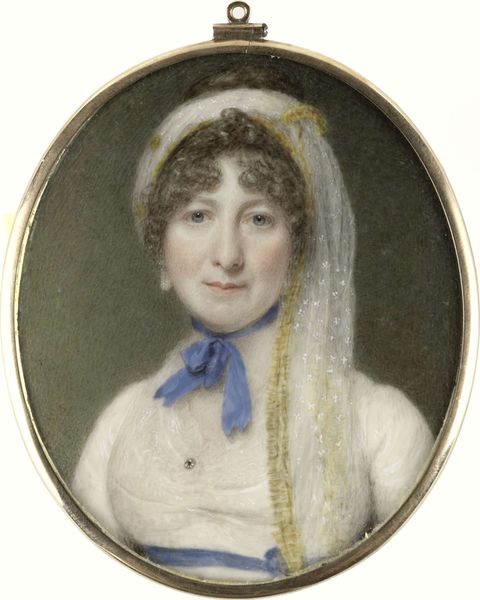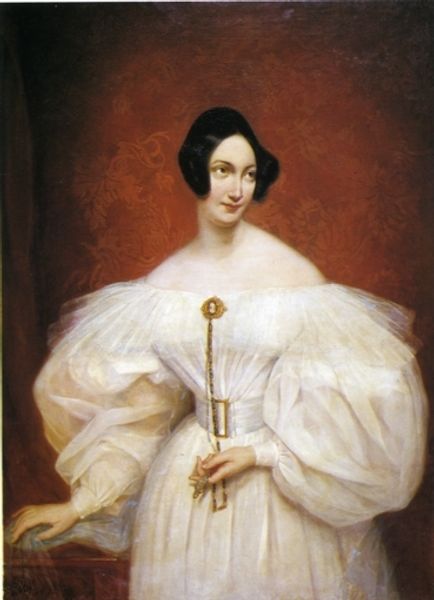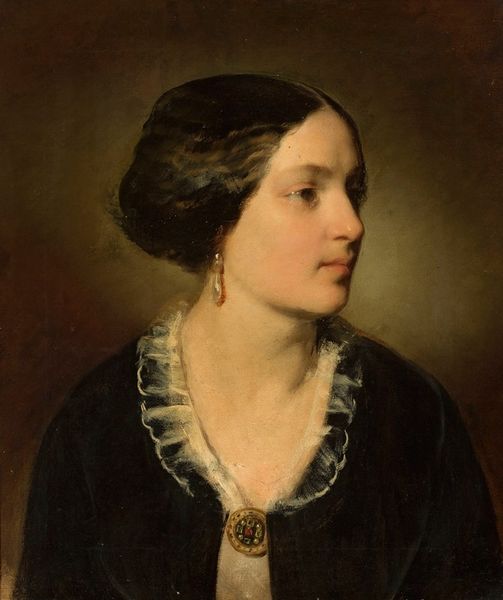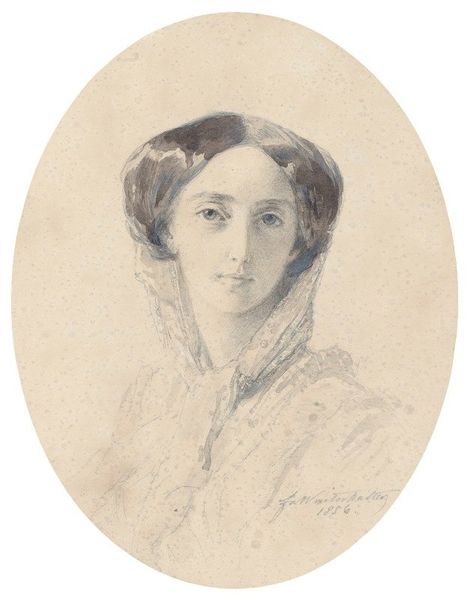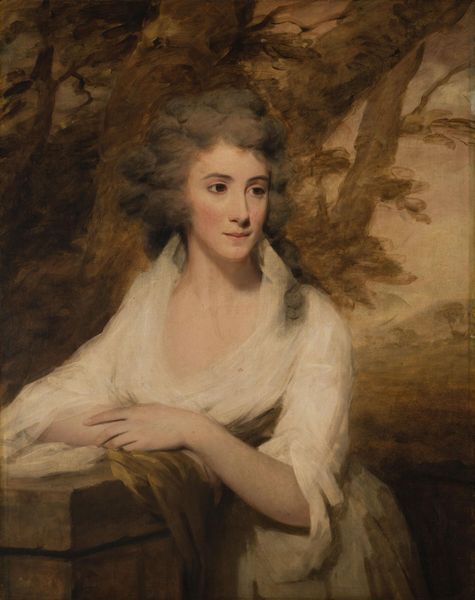
painting, oil-paint
#
portrait
#
painting
#
oil-paint
#
romanticism
#
realism
Dimensions: 30 1/4 x 25 5/8 in. (76.8 x 65.1 cm)
Copyright: Public Domain
Editor: Here we have Mrs. Samuel L. Waldo, painted between 1823 and 1826 by her husband, Samuel Lovett Waldo. The muted colors give it a sort of solemn mood, don't you think? How do you read this portrait? Curator: It is a striking piece, particularly when we consider it within the social framework of its time. A portrait such as this was more than just an image; it was a carefully constructed statement of identity, status, and power. Considering it was painted by her husband, how might the dynamic between artist and subject have influenced the final image? Editor: I suppose there might be a desire to idealize his wife or emphasize certain qualities... Curator: Precisely! Think about the limitations placed upon women of that era, the expectations surrounding their roles in society and marriage. Does this portrait subvert or reinforce those expectations, do you think? Consider her gaze, her attire, and the overall impression of her character. Is there anything empowering about it, or does it reflect the constraints of her position? Editor: I see her face now, and I do feel like there’s some kind of knowing defiance in her gaze...It doesn’t quite fit into this “idealized woman” trope… maybe a subtle resistance? Curator: It is open to interpretation, but your reading brings a fresh perspective! And it begs the question of the role the male gaze played in representations of women throughout art history. What might a contemporary female artist do differently? Editor: I see how studying art gives a new way to understand the culture of the time and relate it to issues that matter today. I am definitely going to think about portraits in a new way from now on. Curator: And art, by extension, becomes a dialogue between then and now, between power structures and their potential disruption.
Comments
No comments
Be the first to comment and join the conversation on the ultimate creative platform.
